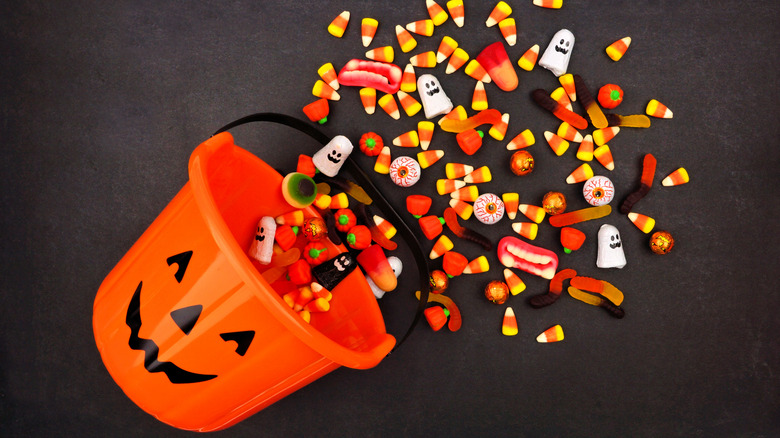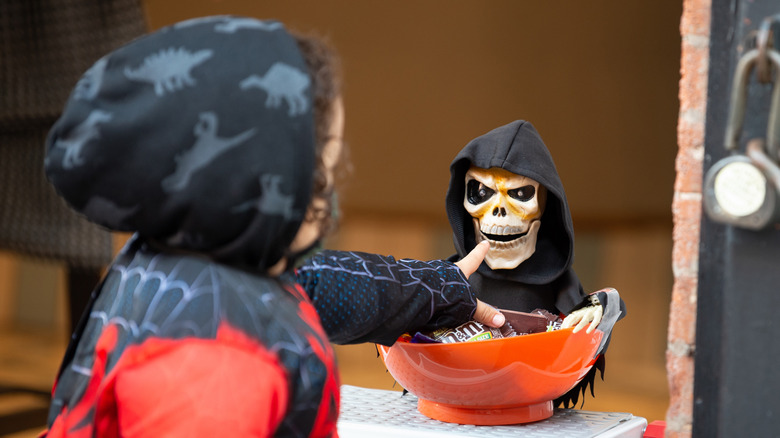The Weird History Of The Poisoned Halloween Candy Myth
With Halloween just around the corner, we're starting to get excited about the big night and we know we're not alone. Although for many of us our days of trick-or-treating are long past, we can still savor the sweet memories of traipsing around our childhood neighborhoods, be-costumed and begging for candy. But as sweet as trick-or-treating is, its history has also been laced with controversy.
Depending on when you grew up, you might remember various scandals of "tainted" or "poisoned" Halloween candy that made you do a double-take before diving into your hard-earned mini Snickers, Reese's, and Baby Ruth bars. According to The History Channel, surges in the popular belief in this threat occurred in the 1970s, the early 1980s, and in 1990, when events in the news shook parents. Read on to learn more about the origins of this myth — which, in rare cases, turned out to be true.
Tainted candy paranoia arises during fearful times
Growing up, some of us may have dealt with parents getting fearful in advance of the trick-or-treating bonanza of October 31. And while there have been isolated instances of people passing out tainted candy, the idea of this crime is mostly a myth. As explained by The History Channel, criminal justice experts Joel Best and Gerald T. Horiuchi conducted a 1985 study on the myth of poisoned Halloween candy, concluding that the threat has been "greatly exaggerated." According to the study, such fears have typically arisen following isolated news events that didn't even have anything to do with Halloween.
In the early 1980s, for example, the "Tylenol murders" occurred, in which cyanide-laced bottles of Tylenol were actually sold, killing seven people in the Chicago area (via PBS). Following those strange murders, warnings about poisoned Halloween candy increased. Although it might be comforting to believe that poisoned Halloween candy has never been passed out, in rare cases it actually has.
On Halloween night, 1974, Ronald O'Bryan of Deer Park, Texas, laced pixie sticks with cyanide and gave them out to five kids, including his son (via The History Channel). Although the other children never ate the candy, O'Bryan's son did, and died soon afterwards. But by all accounts, this bizarre incident was isolated and all other reports of candy poisoning have been thoroughly debunked (via CNN). That should give us all enough peace of mind to indulge our sweet tooths come October 31.

